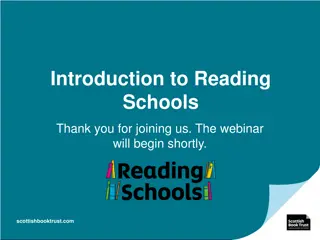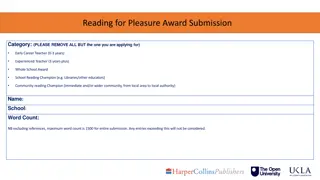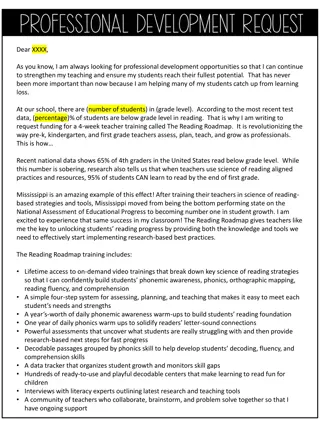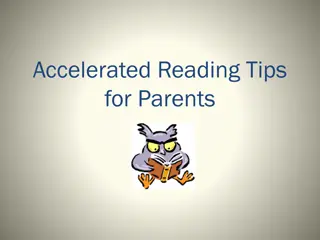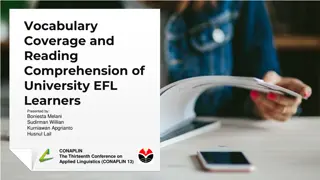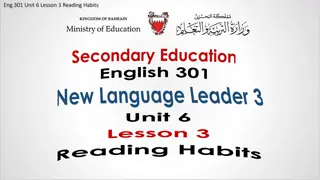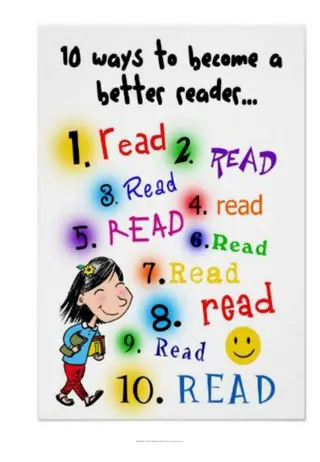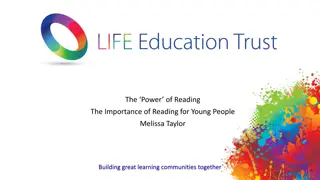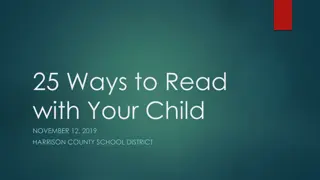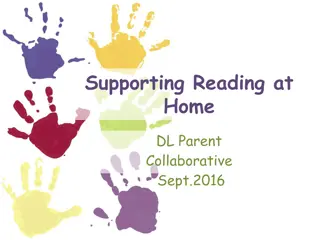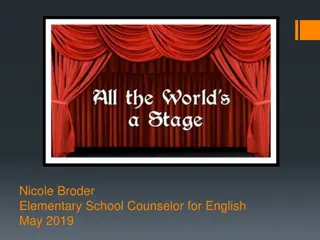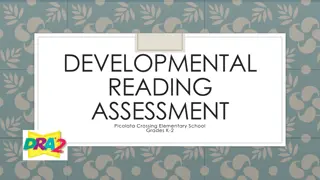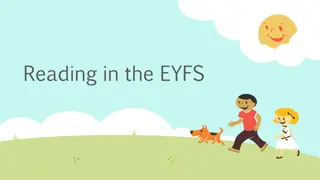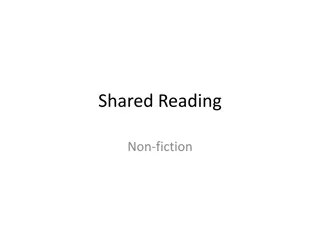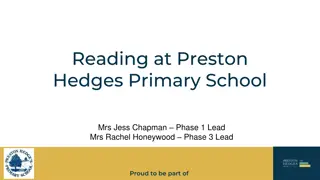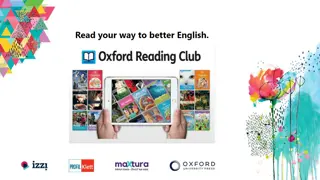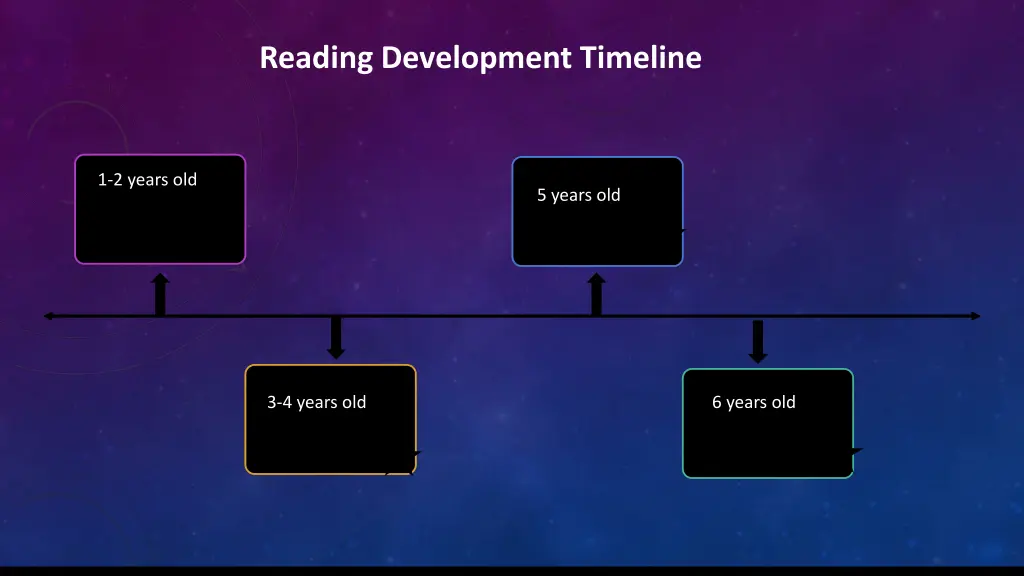
Reading Development Milestones for Young Children
Explore the reading development timeline for children aged 1-6 years old. Discover how language skills evolve from infancy to early childhood, paving the way for successful reading through exposure to books and storytelling. Nurture phonemic awareness, decoding skills, and the alphabetic principle as children progress in their reading journey.
Uploaded on | 1 Views
Download Presentation

Please find below an Image/Link to download the presentation.
The content on the website is provided AS IS for your information and personal use only. It may not be sold, licensed, or shared on other websites without obtaining consent from the author. If you encounter any issues during the download, it is possible that the publisher has removed the file from their server.
You are allowed to download the files provided on this website for personal or commercial use, subject to the condition that they are used lawfully. All files are the property of their respective owners.
The content on the website is provided AS IS for your information and personal use only. It may not be sold, licensed, or shared on other websites without obtaining consent from the author.
E N D
Presentation Transcript
Reading Development Timeline 1-2 years old 5 years old 3-4 years old 6 years old
AGES 1 TO 2 YEARS OLD Reading development can start as early as 1 to 2 years old when the speech of infants is starting to develop. During this age infants start to enjoy hearing stories especially if they are told by a voice they recognize easily like their parents. Recognizing speech sounds allows a child s brain to form the neural networks that are needed to expand and comprehend vocabulary and map out the structure of a sentence. Speech comprehension influences how quickly a young brain learns how to read, so exposing a child to books by reading to them or even talking to them increases their chances of being a successful reader.
3-4 YEARS OLD 3-4 years old's start to look at images in books and recognize familiar things like dogs or cups and pretend to read. When they pretend to read, they usually turn the pages and make up stories based on the images they see in the book. They understand how you're supposed to hold a book and that we read words from left to right and top to bottom. 3 4 year olds can recognize at least half of the betters of the alphabet and match letter sounds to letter.
5 YEARS OLD By age 5 most children can identify how many syllables are in a word, identify individual sounds in a word, and combine sounds to form a word. (phonemic awareness) After phonemic awareness and phonological awareness are developed, then decoding starts allowing them to understand sound relationships, and patterns to correctly pronounce written words. As they continue to strengthen their reading skills can match letter to their corresponding sounds, identify the sounds in spoken words, and match words they hear to words they see on pages. They are also able to retell stories in order, predict what might happen in the story, and sound out simple words. It is important to give early readers books with high frequency words, and shorter sentences because while decoding, they could forget what they read at the beginning of the sentence.
6 YEARS OLD At this age, a child s phonemic awareness is starts to develop even more, learning to read starts with the awareness that speech is composed of individual sounds (phonemes) and a recognition that written spellings represent those sounds (alphabetic principle). To be successful in the alphabetic principle, the child should be able to be aware of how phonemes of spoken language can be manipulated to form new words and rhymes. During this age students can use context clues to sound out and understand words they may not know and connect what they read to personal events. They can also decode words they may not know, and self correct themselves.
SOURCES https://www.understood.org/articles/en/reading-skills-what-to-expect-at-different-ages https://kidshealth.org/en/parents/milestones.html Sousa, Chapter 2, and notes from class

